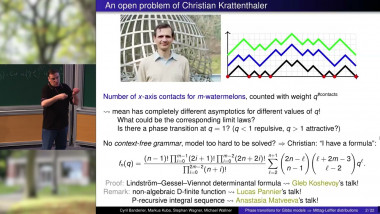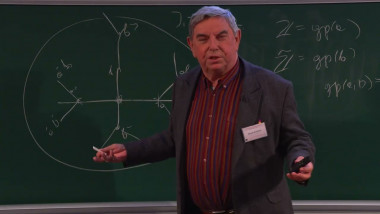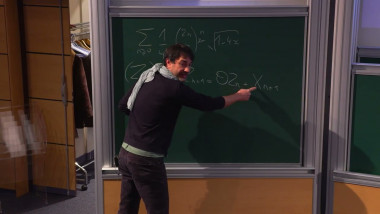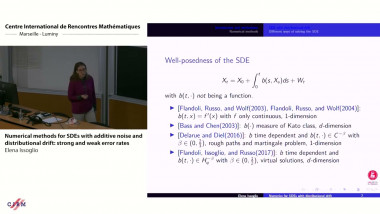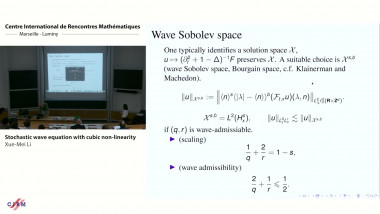Appears in collection : Recent models in random media / Modèles récents en milieu aléatoire
We study an undirected polymer chain living on the one-dimensional integer lattice and carrying i.i.d. random charges. Each self-intersection of the polymer chain contributes an energy to the interaction Hamiltonian that is equal to the product of the charges of the two monomers that meet. The joint probability distribution for the polymer chain and the charges is given by the Gibbs distribution associated with the interaction Hamiltonian. We analyze the annealed free energy per monomer in the limit as the length of the polymer chain tends to infinity. We derive a spectral representation for the free energy and use this to show that there is a critical curve in the (charge bias, inverse temperature)-plane separating a ballistic phase from a subballistic phase. We show that the phase transition is first order, identify the scaling behaviour of the critical curve for small and for large charge bias, and also identify the scaling behaviour of the free energy for small charge bias and small inverse temperature. In addition, we prove a large deviation principle for the joint law of the empirical speed and the empirical charge, and derive a spectral representation for the associated rate function. This in turn leads to a law of large numbers and a central limit theorem. What happens for the quenched free energy per monomer remains open. We state two modest results and raise a few questions. Joint work with F. Caravenna, N. Petrelis and J. Poisat
